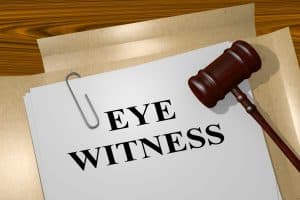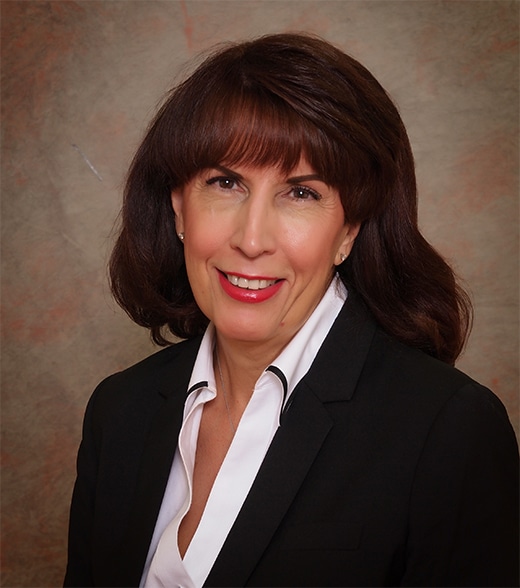Why Eyewitness Accounts Aren’t Trustworthy
 If you were charged with a crime, prosecutors may want to bring in eyewitnesses to help convict you. Or maybe you want to bring an eyewitness onto the stand to help prove your innocence. It seems like a great tactic to use for either side. After all, the eyewitnesses are the people who actually saw the crime happen, right? Well, sort of. These people did witness the crime occur, but they may not necessarily be all that reliable to bring onto the stand.
If you were charged with a crime, prosecutors may want to bring in eyewitnesses to help convict you. Or maybe you want to bring an eyewitness onto the stand to help prove your innocence. It seems like a great tactic to use for either side. After all, the eyewitnesses are the people who actually saw the crime happen, right? Well, sort of. These people did witness the crime occur, but they may not necessarily be all that reliable to bring onto the stand.
The Innocence Project, one of the biggest non profit organizations that works to free the wrongfully incarcerated, dove into the numbers. They found that eyewitnesses identifying the wrong person contributed to 69% of the 375 wrongful convictions that were eventually overturned. That means at least 258 people sat in prison for months or years when they were completely innocent, all because a witness said they saw the person in question when they actually did not. So if you found out that you have been identified as a suspect by an eyewitness, do not worry. This type of accusation may not result in a conviction if handled properly. An experienced criminal defense attorney can help.
What can affect a witness’s memory?
When an eyewitness misidentifies someone as a suspect, they are not necessarily lying. They may truly believe that they saw that exact person commit or participate in a criminal act. There are some things that can affect or alter the way they remember the events that day or the person they saw.
People reconstruct memories
Unlike what many think, most people do not have an internal-type of video recorder that allows them to play back memories exactly as they happened. Instead, people reconstruct their memories essentially by putting puzzle pieces back together. However, it is important to note that there could be one or two pieces left out, but the big picture is still able to be seen without really noticing the ones missing. So when an eyewitness recounts the events that occurred, they may be missing a few key details even when they don’t believe they are.
A lawyer or law enforcement officer may also be able to alter a witness’s testimony during questioning. They may mention something, or ask a question in a suggestive way, that makes a missing puzzle piece appear even if it’s not the right one.
Emotions can blur memory
If the eyewitness was directly involved in the crime in question, then they were likely under a lot of stress during the event. A 2007 study found that stress can affect the brain. The researchers found that experiencing moderate stress can affect information storage while excessive stress can affect memory function itself. The level of stress is significantly higher if the witness was in the presence of weapons, like knives or guns. Depending on the person, even going through the process of talking with authorities and actually identifying the suspect can be stressful. There are so many ways this can affect an eyewitness account.
Disguises make identifying more difficult
If the real perpetrator was wearing a mask, wig, or anything that would cover up their real appearance and features, then this could make identifying them even harder. The eyewitness may feel pressured to pick “the right one” instead of simply saying they are unsure.
Too much time has passed
If picking the suspect out of a lineup happened weeks after the incident, then it’s likely that the eyewitness will not remember exactly what the suspect looks like. If witnesses need to select a photo or pick someone out of a lineup, then it should be done almost immediately after crime occurred in order for the selection to be accurate.
Lack of characteristics that stand out
If the suspect did not have any visible scars, tattoos, facial hair, or were of average height, this could make it more difficult for a witness to identify the right person.
There is also the matter of inadequate “cognitive visual experience.” The University of Exeter recently studied the “other race effect,” the phenomenon that says people have a difficult time identifying specific faces when those faces are a different race. But their analysis says that it’s not necessarily race-related; anyone with a different background may face these challenges. So if the alleged perpetrator is a 20-something, blonde male, a 60-something eyewitness may struggle to distinguish between two suspects, even if the witness has perfect or near-perfect visual acuity.
Law enforcement can also sway an eyewitness
While this isn’t always intentional, sometimes the people conducting interviews or the lineup can influence the way a witness thinks. For example:
- Officers typically know who the real suspect is while conducting a lineup and may unintentionally signal or give clues as to which one it is.
- Eyewitnesses assume the real suspect is in the lineup unless they are specifically told they may not be.
- “Filler” suspects may not match the description, which can make the real suspect stand out more.
- Eyewitnesses may not be confident. If they are not asked about their confidence level immediately after selecting a suspect, then law enforcement may influence it by suggesting they picked the right person.
Texas is one of 25 states that implemented eyewitness reforms
In an effort to increase the accuracy of eyewitness statements, some core reforms were created—and Texas is one of those to adopt them. These hopefully will diminish how many times an innocent person is accused and convicted of a crime. The core reforms promoted by the Innocence Project include:
- Using the “double-blind” procedure where neither the administrator nor the eyewitness know who the real suspect is.
- Giving clear instructions to eliminate the possibility of the eyewitness feeling compelled to make a selection if they’re unsure. It will also include telling the witness that the suspect may or may not be in the lineup.
- Creating a fair lineup composition so non-suspects will always resemble the eyewitness’s description and look like the actual suspect.
- Taking a confidence statement immediately after the selection in the eyewitness’s own words.
Despite the added efforts, completely innocent people are still mistakenly identified as criminals all the time. If you have been pointed out as a suspect by an eyewitness to a crime, then you need to contact a criminal defense lawyer at Mary Beth Harrell Law Firm today. Our attorneys in Killeen and Copperas Cove defend clients throughout all of Central Texas, including Temple, Belton, and Waco, as well as Coryell, Bell, and McLennan Counties. Our experienced attorneys will help you with your case so you can receive the best possible outcome. Call our office or submit our contact form to schedule a consultation.

I’ve dedicated my legal career to defending my clients. I demand all the evidence. I investigate all the facts, the so-called witnesses and even the police officers. I make it my business to know the law. Cases can be won or lost before you even set foot inside the courtroom.
Read more about Mary Beth Harrell
